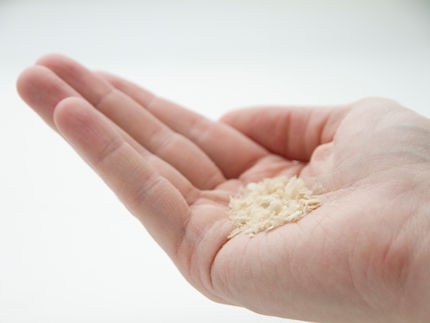Cooking oil, graphene among CO2 capture prize entry ideas
Cooking oil and graphene, a recently discovered substance stronger than steel, might seem to have little in common, but some theorize both could be made from carbon dioxide emitted by coal- and gas-fired power plants.
Teams from Canada, China, Finland, India, Scotland, Switzerland and the U.S. have submitted 47 proposals for the first round of a $20 million contest to put power-plant emissions to profitable use, NRG COSIA Carbon XPRIZE officials announced Wednesday.
"Overall, we've got some people trying some classic approaches, some classic chemistry, and they're trying to do it in a new way, or a more efficient way. And then we have some people taking some unorthodox approaches and they're trying to do something brand new," said Marcius Extavour, director of technical operations for the contest.
NRG is a major U.S. energy company based in Houston, Texas. COSIA stands for the Canadian Oil Sands Innovation Alliance, a group of companies developing the Canadian oil sands.
The first round of competition will be a technical and business viability review on paper. Up to 30 teams will advance to the second round, which will involve using simulated flue gas in a lab.
From there, up to 10 teams will share a $2.5 million milestone prize and advance to the third and final round: Using real emissions from a coal-fired power plant in Wyoming or a gas-fired power plant in the Canadian province of Alberta.
The goal is to demonstrate the most profitable way or ways to make products from carbon dioxide to defray the cost of keeping the gas out of the atmosphere. The winner of each side of the competition - the gas-fired power plant side or the coal-fired one - will get a $7.5 million grand prize.
Nine trained scientists from business and academia will decide the winners at each turn.
Entries were due July 15. Teams have emerged from academia, private business, startups - even a father-and-son partnership - with ideas for new building materials, fuel sources, plastic products and more:
-
A team from the University of California, Los Angeles, proposes to make a 3D-printed building material called "CO2NCRETE" with half the carbon dioxide emissions as typical concrete production.
Pond Technologies, of Markham, Ontario, proposes to use CO2 emissions to grow algae and process the algae into biodiesel and a "solid biofuel."
A U.S.-based team called Protein Power proposes to use the CO2 to grow microbes for use as fish food at fish farms. Fish farms often use wild-caught fish as fishmeal.
Still others propose to create a palm-oil-type product. On the almost-science-fiction end, others propose to make graphene or extremely tiny tubes of carbon molecules called nanotubes.
"Those materials are so new there's not sort of a technical process for how to make them," Extavour said. "It's really cool to see people really kind of swinging for the fences."
The state of Wyoming has pledged $15 million to help modify Basin Electric's Dry Fork Station coal-fired power plant near Gillette to host carbon-capture research. XPRIZE, which is perhaps best known for holding contests to encourage private exploration of space, will be the facility's first tenant.
Most read news
Other news from the department business & finance

Get the food & beverage industry in your inbox
By submitting this form you agree that LUMITOS AG will send you the newsletter(s) selected above by email. Your data will not be passed on to third parties. Your data will be stored and processed in accordance with our data protection regulations. LUMITOS may contact you by email for the purpose of advertising or market and opinion surveys. You can revoke your consent at any time without giving reasons to LUMITOS AG, Ernst-Augustin-Str. 2, 12489 Berlin, Germany or by e-mail at revoke@lumitos.com with effect for the future. In addition, each email contains a link to unsubscribe from the corresponding newsletter.























































